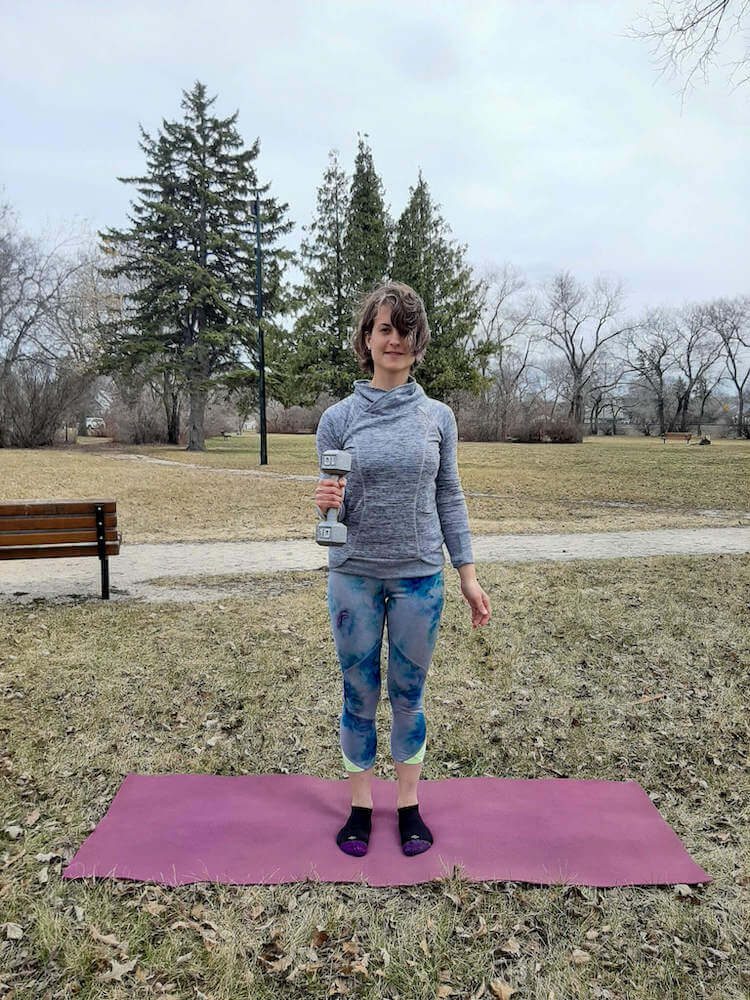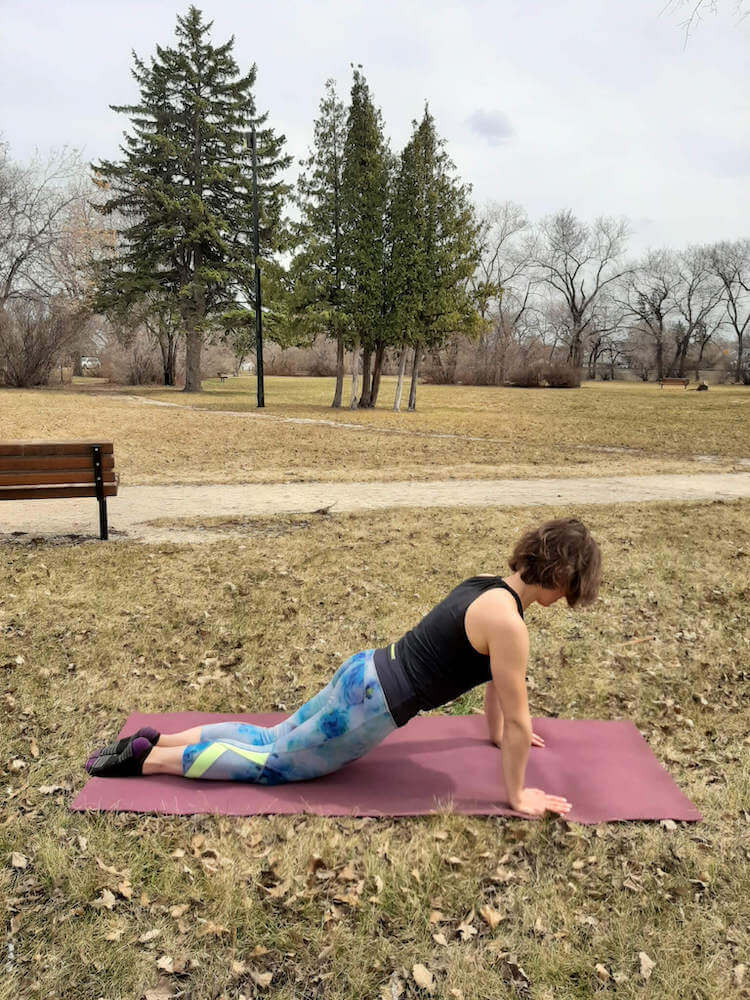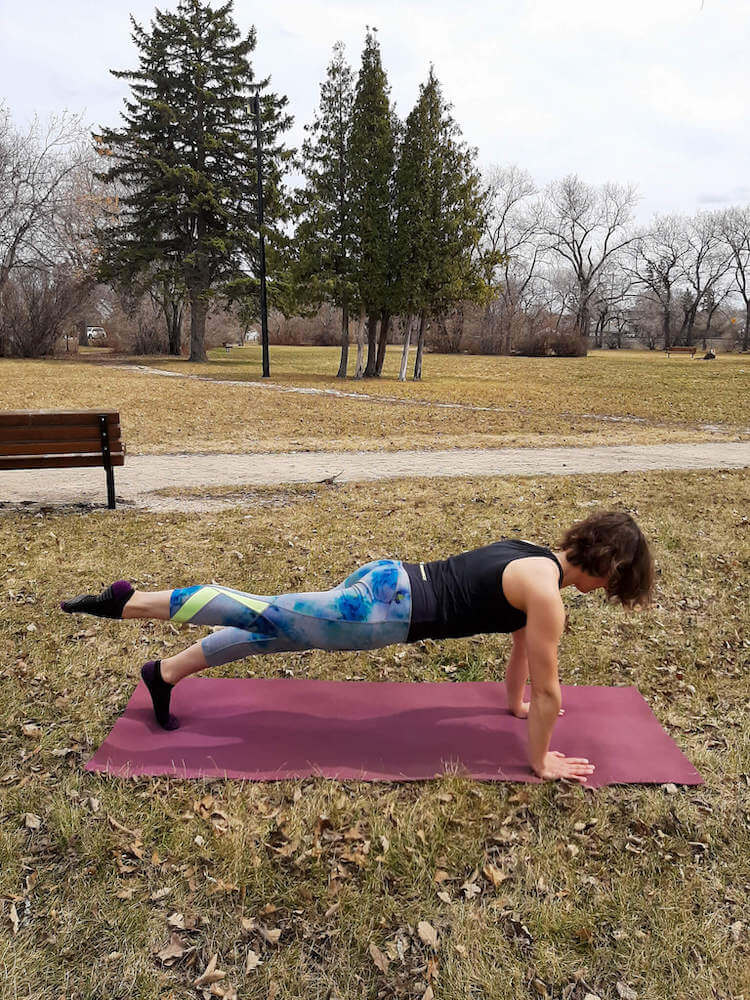5 Exercises to Correct Bad Posture to Undo the Damage of Sitting
We already know that sitting too much is not good for our bodies. It can lead to pain or stiffness in our muscles and joints. Your body needs to move to be healthy.
Too much sitting contributes to your risk of type 2 diabetes and premature mortality, among other things (1). Breaking up our sitting times with movement can be beneficial even if we do end up sitting for several hours within a day (2).
In this article, we’ll go over five specific exercises that are important for maintaining muscular activation for basic mobility and posture, even if you don’t do much else outside of the gym.
Why Sitting Too Much Destroys Posture
If you find that you are not moving as much as you used to before isolation, then consciously incorporating more movement into your daily life is important. This can be as simple as going for a walk or puttering about in the garden. Movement is essential to our health.
However, you may find that with time, even if you do regular movements, sitting too much also leads to the weakening of some muscles simply from lack of use as we melt forward into our phones, laptops, and steering wheels.
When we sit too much there are parts of the body that become weak, even though we need them for basic advantages like holding a good posture and creating more strength and stability in our arms and legs.
I see muscular strength disappear all the time in my clients with office jobs, even before self-isolation was imposed. Their core becomes so weak they can’t hold a correct posture for more than a few seconds, and they can’t squat to pick up their kids without putting their back or knees at risk. These are yet more reasons we need to move!
That’s where I come in, showing them exercises that can get them moving in safe and effective ways even when they can’t come to the gym for regular workouts.
How Do I Know if I Have Bad Posture?
So how do you know if you need to incorporate specific exercises to counteract too much sitting?
Read the symptoms below to see if you can relate to any of these experiences.
- Your shoulders cave in towards chest when you sit.
- You have difficulty sitting with good posture -it may feel weird, sore, or unnatural.
- You feel stiff when you stand up from a sitting position.
- You cannot squeeze your butt cheeks on command while sitting.
- You have difficulty lifting your arms from straight down at your sides, forward into the air, and ending above your shoulders.
- You have difficulty pulling your shoulder blades back towards one another while sitting or standing.
- Your knees cave in towards one another when you squat.
- Your heels lift off the floor when you squat.
If you experience any of these symptoms, and they are not the result of a known injury, then you may be sitting too much.
5 Exercises to Correct Bad Posture to Undo the Damage of Sitting
Here are 5 exercises that can help keep supportive muscles from weakening due to excessive sitting. You’ll find them helpful whether you are new to exercise or a seasoned gym rat on quarantine.
1. Superman
Why: This exercise engages lower back muscles that often become weak with prolonged sitting.

The basic (shown above): Lay down on your stomach with arms and legs stretched out away from your body. You can also try this with elbows bent and your hands by your ears. Lift your upper body off the ground as high as you can go and, at the same speed, lower it to the ground. Do 2-3 sets of 10-15 reps depending on the ease of movement.
Take it up a notch (shown below): If you’re finding this exercise easy, then lift both your upper body and legs off the ground. Do 3 sets of 15 reps. You can also try holding the last rep for 10 seconds to make it even more challenging.

2. Straight Arm Raise
Why: This exercise works to improve posture and help strengthen muscles that hold your shoulder blades in their anatomically correct position.

The basic (not shown): Straighten arms as they hang by your legs shoulder-width apart. Keeping them straight, lift your arms in front and overhead until your hands are above your shoulders. With the same speed as you lifted your arms, lower your arms back into the starting position. Do 2 sets of 12 reps, building up to being able to do 3 sets of 12 reps. Stand with shoulders and butt against a wall if you find that your lower back is arching.
Take it up a notch (shown above): Do the same exercise with a mini band around your wrists. Be sure to keep your arms shoulder-width apart.
3. External Rotation
Why: This is another exercise to help improve your posture, while also opening up the front of your shoulders to work on preventing painful shoulder impingement.

The basic (shown above): Hold a weight of 5 pounds or less, or use a soup can. While standing with one arm bent at 90 degrees, and elbow glued to your side, move your hand from in front of you to your side without moving any other part of your body. Using the same speed, return your hand to your front. Repeat 10 times and then change sides. Do 2 sets of each side, working up to 3 sets per side.
Take it up a notch (not shown): Do the same movement but with your torso at an angle by leaning forward with the front of your body propped on a bench.
4. Hip Bridge
Why: This exercise works the muscles in your butt, making everyday movements like picking kids up from the ground easier and safer for your back and knees.

The basic (shown above): Lay with your back on the ground and knees bent, with hands by your sides and feet as close to your hands as you can comfortably place them. Squeeze your butt to lift your hips off the ground and towards the ceiling, slowly peeling your back off the ground, until your hips are fully extended, being careful to not extend your lower back. Hold for 2 seconds and then lower your hips to the starting position. You can hold a weight, such as a dumbbell or small water jug, over your hips to increase intensity. Do 2-3 sets of 12 reps.
Take it up a notch (shown below): Do the same exercise but with one ankle cross over the opposite knee. You can do this without added weight, or while holding a weight on the hip of the working side. Do 10 reps and then switch sides. Complete 3 sets.

5. Plank Variations
Why: Plank works all sides of the core in unison. It helps to strengthen your abdominal muscles and back, as well as shoulders and legs.

The basic (shown above): Lay with your stomach on the ground, place hands under shoulders, tighten the core, straighten legs, and curl toes under. Press yourself up until arms are straight while you are balanced on your toes and hold this position. Alternatively, you can hold a plank position with elbows on the ground beneath your shoulders rather than using your hands. Hold the position for a minimum of 30 seconds. Do not let your hips drop, knees bend, butt pop up into the air, or chest fall towards the floor. If this is too difficult then balance on your hands and knees. Do 3 sets.
Take it up a notch (shown below): Once you can hold a plank on your toes and elbows for over a minute, then you can start to change things up to make holding a plank more difficult. There are more variations of plank than could possibly be covered in one article. The best variation for these purposes, and to increase the challenge, is to keep your plank position on your hands/elbows, and toes, and change to 3-legged plank. Start by lifting one arm, hold for a few seconds, and then put it down. Repeat this with each arm and leg without letting the rest of your body move. This is one rep. Do 3 sets of 5 reps.

You can do these 5 exercises as a circuit together as one of your sitting breaks, or, alternatively, split them up to go with the corresponding day you are working out that part of the body.
For example, if you have been able to keep up an exercise routine with weights throughout this quarantine, you can add superman, straight arm raise, and external rotation on a day you are working out your upper body, and hip bridge and plank variations can be done on the days you are working out your lower body.
Find a way that works for you to do these exercises regularly as you will get the most benefit if you can do them each at least twice per week.
*Note that these exercises require some level of mobility and body awareness, and are not customized to any injuries or specific mobility issues you may have. Always speak to your licensed health care professional before beginning new exercise regimes.
Source: 5 Exercises to Correct Bad Posture to Undo the Damage of Sitting
